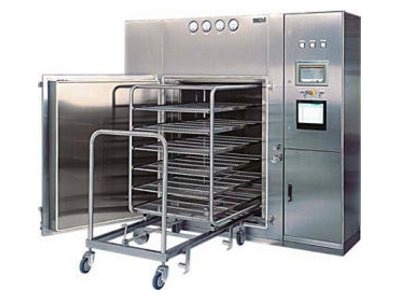Depyrogenation Oven and Tunnel Sterilizer Design
Depyrogenation Oven Design
Depyrogenation ovens are designed to provide controlled high temperatures for the removal of pyrogens from equipment and materials. The design of depyrogenation ovens includes the following key elements:

-
Chamber:
The oven chamber is typically made of stainless steel and is designed to withstand high temperatures. It is insulated to maintain a consistent temperature throughout the depyrogenation process.
-
Heating Elements:
Depyrogenation ovens are equipped with heating elements, such as electric heating coils or gas burners, to generate the required high temperatures. The heating elements are strategically positioned within the chamber to ensure uniform heat distribution.
-
Air Circulation:
To ensure proper heat distribution and achieve consistent depyrogenation, depyrogenation ovens are equipped with fans or blowers. These circulate the hot air throughout the chamber, minimizing temperature variations and ensuring all items are exposed to the desired temperature.
-
Temperature Control:
Depyrogenation ovens have precise temperature control systems to maintain the desired depyrogenation temperature. They are equipped with temperature sensors and controllers that monitor and regulate the oven's temperature, ensuring it remains within the specified range.
-
Air Filtration:
Since the goal of depyrogenation is to remove pyrogens, depyrogenation ovens often include high-efficiency air filtration systems. These filters capture and remove any airborne particles, including pyrogens, to prevent recontamination of the depyrogenated items.
Depyrogenation Tunnel Design
Tunnel sterilizers, also known as continuous sterilizers, are designed for large-scale depyrogenation of pharmaceutical products or containers. The design of tunnel sterilizers includes the following key elements:

-
Conveyor System:
Tunnel sterilizers have a conveyor system that transports the items through the sterilization process. The conveyor system is designed to ensure a controlled and consistent movement of the items through the tunnel.
-
Temperature Zones:
Tunnel sterilizers consist of multiple temperature zones, typically with different heating sources, along the length of the tunnel. Each zone is designed to achieve and maintain the desired depyrogenation temperature.
-
Air Circulation:
To ensure uniform heat distribution and effective depyrogenation, tunnel sterilizers have a forced air circulation system. Fans or blowers circulate the hot air within the tunnel, ensuring that all items passing through are exposed to the desired depyrogenation temperature.
-
Temperature Control:
Tunnel sterilizers are equipped with temperature control systems to monitor and regulate the temperature in each zone. Temperature sensors and controllers ensure that the desired depyrogenation temperature is maintained throughout the sterilization process.
-
Exhaust System:
Tunnel sterilizers have an exhaust system to remove any excess heat and maintain the desired temperature within the tunnel. The exhaust system also helps to remove any volatiles or off-gases generated during the depyrogenation process.
Both depyrogenation ovens and tunnel sterilizers are designed with the goal of achieving effective depyrogenation by subjecting the items to high temperatures. The specific design and features may vary depending on the intended application, scale of operation, and regulatory requirements.